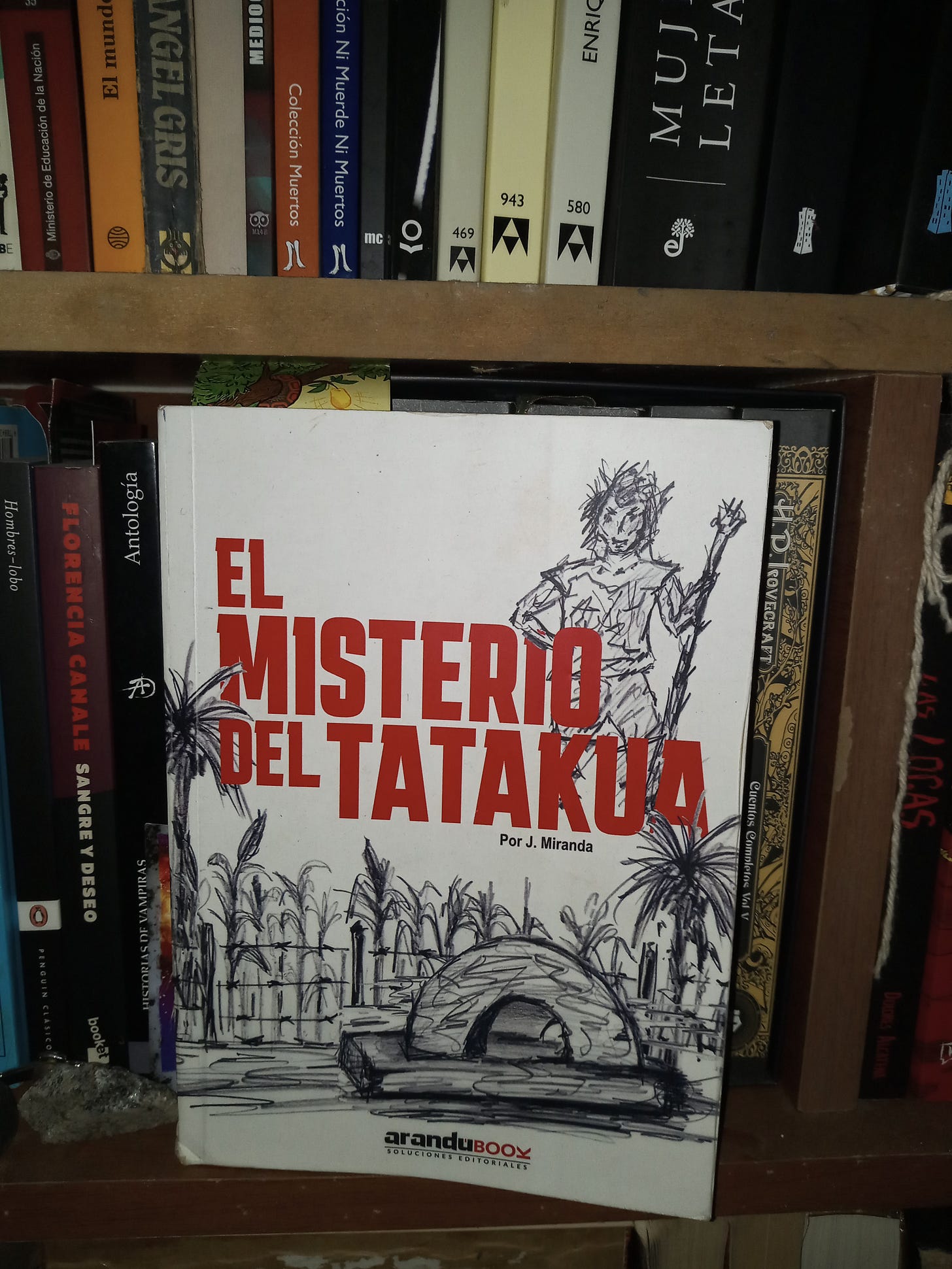Terror; today; Here #5 The mystery of Tatakua, by J. Miranda

The popular coastal storyteller – Paraguay, Northeast of Argentina, southern Brazil – has its own merit as a horror narrative. At least in the Creole transformations that remained in our imaginary and that became demonic elves, for example, to Guarani spirits of the mountain. I remember spending nights when I found out about The existence of the lobison. Wolf men, vampires and witches are far away, in Europe, in abandoned castles. In America we are safe. But of the bad light, of the Kurupí and the Yasí Yateré there is always some close testimony. And always with some truth.

The most emblematic of all, without a doubt: the Pombero. Strange elf that arises from the amalgam of several different characters. Legend and unrecognizable. Fositional and benevolent in equal parts. Protector of nature that combines the sexual appetite of the Kurupí with the magic – and the chiflido – of the Yasí Yateré and with the virtues of the forgotten Yárá Cuuro. Among several essays, shorter or longer, more faithful or more original, which abound among Latin American stories, Paraguayan J. Miranda decided to take the step and finally honor this creature with a novel. The mystery of Tatakua is A horror novel about Pomberito. Nothing more and nothing less.
In his childhood, Paul had a close encounter with the creature that will leave him marked for life. An unforgettable episode in which the goblin and his grandfather faced each other; The Pombero had returned, as usual, to collect a favor. The scene, fear, the house in the middle of the countryside, legs above by the work of the magic of the goblin and, of course, his chiflido, pursue Paul’s imagination to his adulthood, even if he puts from all his efforts to forget it.
Aware of its modernity, the novel exploits the conflict between tradition and the contemporary world. Like many young people who, for personal reasons, change the people for life in the city, Pablo Adult lives in Asunción, from party to party, completely disconnected from their relatives. He wants to forget everything related to the Pombero. To the point of laughing at those who still believe in those stories for children. But when the grandfather dies – and he will be the first to find out because he will appear in dreams – he will inherit a debt to the monster, rooted in him more intimately than he imagines.
Miranda’s Pombero doesn’t turn around. It personifies the children’s terrors, the version that is counted in the field so that the children do not make Macana at the time of the nap. It is malignant, in its purest form. But it is a spectrum of a certain necessary evil in nature, in each of us and, above all, in Paul. The novel does not intend to reaffirm Guaranitic knowledge, but simply tell a horror story. A story Weird that may have as a monster from another world, such as cuckoo, like Pennywiseto Pombero himself and everything we know about him.
The book was published in 2023 by the Paraguayan editorial Arandubook and has some of the vices of independent editions. Mainly, the lack of corrections, not only of syntax, score or typical, but some style issues that could be sharpened. It is not the author’s first novel, but the only one I read to the date. In The mystery of Tatakua Choose a light style, to read without the pencil in the hand and, preferably, only on the mountain, at night.
Terror; today; here It is a reading guide for contemporary and Latin American horror productions. Mainly Argentine, for my geographical condition. The idea is to show a panorama of what is being released and published in terms of terror close to us. It is not a recommendation or criticism. With which my opinion matters little and nothing. As it is very common for terror to circulate in the independent circuit – editorial penins, author editions, internet—,, I’m not going to talk bad about the works nor advise them to buy them. Which does not mean that I like more or less. Except that something is lousy – it is worthable – and therefore I do not write anything about it, I think there is a reader for everything, even for what fails to catch me. In any case, I want to collaborate with the genre. That the one looking for terror finds terror.
#4 thirst
#3 To bewitch a hunter
#2 Here is something else
#October 1 94 ‘





